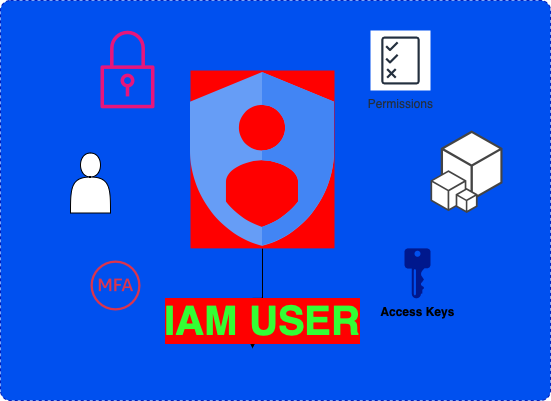AWS
In Amazon Web Services (AWS):
IAM (Identity and Access Management):
IAM is a service that helps you securely control access to resources in your cloud environment. In the context of AWS (Amazon Web Services), IAM allows you to manage users, groups, and permissions to access AWS resources. Here are some key components of IAM:
Users:
IAM users are entities that you create in AWS to represent the people and services that interact with AWS. Each user has security credentials that are used to authenticate and authorize their access to AWS resources.
Groups:
You can group IAM users and apply permissions to the entire group. This makes it easier to manage permissions for multiple users who need the same access.
Roles:
IAM roles are similar to users, but they are not associated with a specific person. Instead, they are assumed by trusted entities, such as AWS services or applications, to obtain temporary security credentials.
Policies:
IAM policies are JSON documents that define permissions. You attach policies to users, groups, or roles to specify what actions they are allowed or denied to perform on which resources.
User Access Keys:
IAM users can have access keys, which consist of an access key ID and a secret access key. These keys are used to authenticate programmatic requests made to AWS services, such as when using the AWS Command Line Interface (CLI) or SDKs (Software Development Kits).
Access keys provide a way for you to interact with AWS services without requiring your username and password. However, they should be handled securely. The access key ID is used to identify the user making the request, and the secret access key is used to sign the request and authenticate the user. CLI (Command Line Interface):
The AWS Command Line Interface (CLI):
Is a unified tool that provides a command-line interface for interacting with various AWS services. It allows you to control multiple AWS services directly from the command line, scripting environment, or by automating the tasks using scripts.
To use the AWS CLI, you need to install it on your local machine and configure it with the necessary credentials, which include the access key ID and secret access key associated with an IAM user. Once configured, you can use the AWS CLI to perform various tasks, such as managing EC2 instances, S3 buckets, IAM users, and more, all from the command line.
In summary:
IAM helps you manage access to AWS resources, User Access Keys provide programmatic access to those resources, and the AWS CLI is a tool for interacting with AWS services through the command line.
Let’s dive in!
